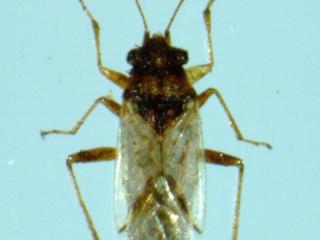Rutherglen bugs are being found in pastures
- Katanning
- Mayanup
Rutherglen bug nymphs have been found by consultants in pastures east of Katanning and at Mayanup. Nymphs are estimated at 10 per 10cm square in patches, and there is a concern of potential damage in newly germinating renovated pastures.
Rutherglen bug adults are 4mm long, have clear wings folded flat on the back, are grey-brown-black in colour and are very mobile.
Rutherglen nymphs have a pear-shaped, red-brown body. The nymphs do not resemble adults and can be confused for different species.
Swarms of the bugs, nymphs, and adults often move out from under plants when they are disturbed.
Damage from rutherglen bugs is similar to mite sucking in that seedlings will become stunted, discoloured, and distorted. Rutherglen bugs do most damage to moisture stressed plants.
Rutherglen bugs are often found in paddocks with weeds that germinated with summer/early autumn rains. Rutherglen bugs are especially partial to goosefoot, which is also commonly called mint weed.
Where weeds have been left uncontrolled close to seeding, surviving rutherglen bugs may pose a threat to emerging crops under dry and sunny conditions.
Rutherglen bugs prefer warm, dry conditions, and become inactive and die out with prolonged cold and wet winter weather patterns.
Most emerging crops will not have sufficiently high populations of rutherglen bugs to warrant spraying, but where they are in large numbers, chemical control of rutherglen bugs may be difficult. Repeat sprays are sometimes necessary against re-invading adults or late nymphal stages.
For insecticide recommendations, refer to DPIRD’s 2021 autumn winter insecticide guide.
For more information, see the department’s Diagnosing rutherglen bug and Rutherglen bug – economic considerations pages.
For more information, contact Svetlana Micic, Research Officer, Albany on +61 (0)8 9892 8591.
Article authors: Cindy Webster (DPIRD Narrogin) and Svetlana Micic (DPIRD Albany).


